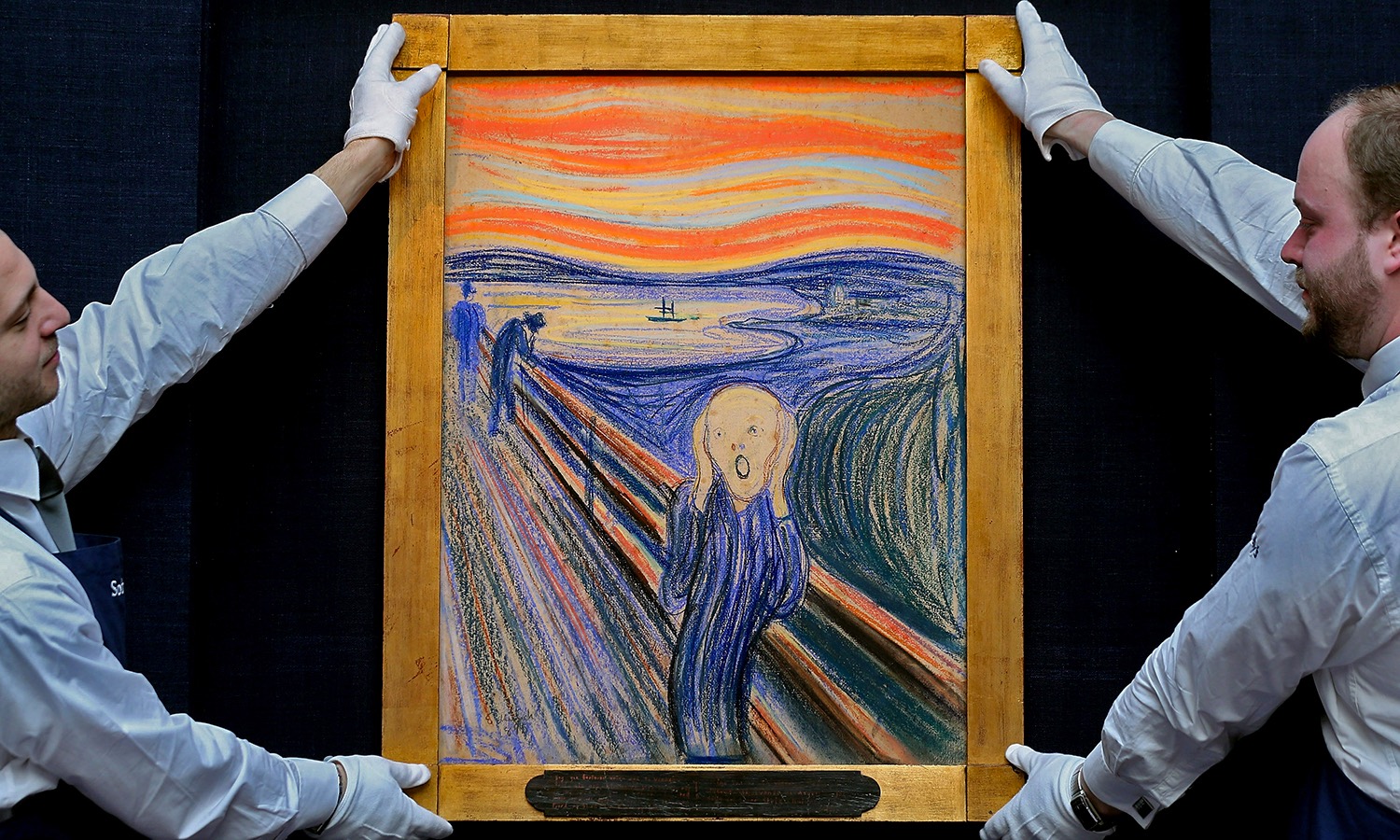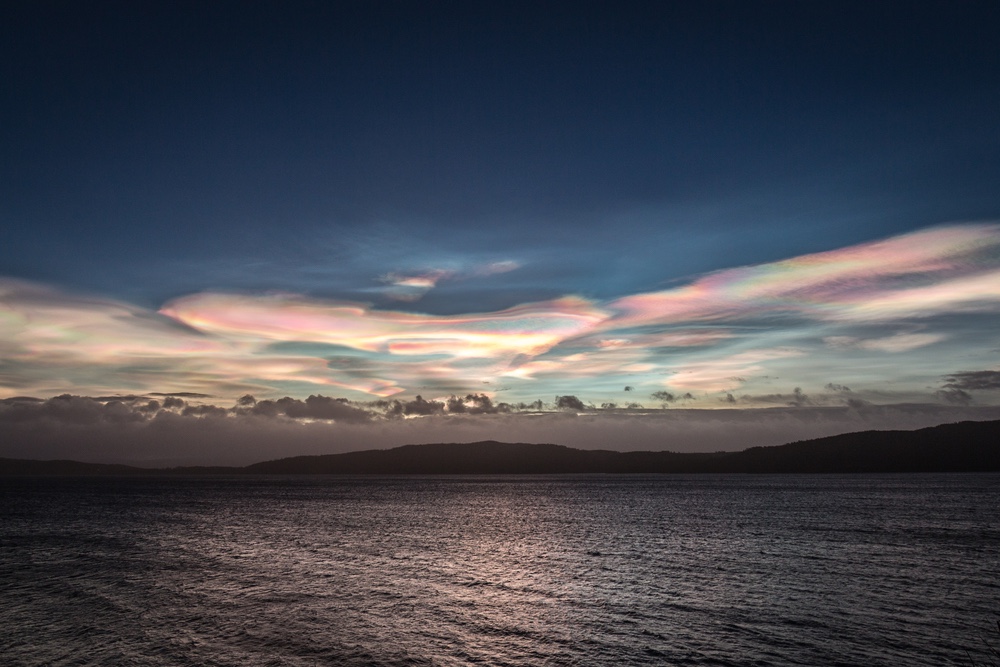Did Edvard Munch See 'The Scream' in Spectacular Rare Clouds?

Could Edvard Munch's "The Scream" have been inspired by a rare cloud formation?
Scientists at the European Geosciences Union annual meeting this month in Vienna think so. A new hypothesis holds that Munch may have been inspired to paint the masterpiece by "mother-of-pearl clouds" (also called nacreous clouds). These unusual, nearly iridescent, clouds are best seen in wintertime at sunrise or sunset, when they are lit from below.
"We know from observations dated to the late 19th century that nacreous clouds did appear over Oslo during the time period," Helene Muri, an atmospheric scientist at the University of Oslo, told Live Science in an email. "And from Munch's journal entries, it seemed like a physical event, a natural phenomenon, he was describing." [5 Times Science Inspired Art]
Nature in art?
The famous 1893 painting depicts a black-clad figure wailing against a swirling red sky. Munch wrote in his diary that the imagery was inspired by a sunset walk with friends in Norway, when, feeling tired and sick, he paused and watched the sky turn blood-red.
"I sensed a scream passing through nature; it seemed to me that I heard the scream," Munch wrote, according to The Art Institute of Chicago. "I painted this picture, painted the clouds as actual blood."
Munch's admission of nature's role in the painting has spawned theories about what caused the vermillion sky that evening. One popular hypothesis is that the sunset was especially brilliant due to reflective particulate matter from the enormous 1883 Mount Krakatoa eruption that spread across the planet and caused five years of global cooling.
A new explanation
In 2014, though, a "spectacular" mother-of-pearl cloud formation lit up the evening sky in Oslo. Meteorologist Svein Fikke from Lørenskog, Norway, was struck by the wavy, colorful clouds and how much they resembled Munch's tumultuous depiction of the sky.
Sign up for the Live Science daily newsletter now
Get the world’s most fascinating discoveries delivered straight to your inbox.

"The fact that these clouds are only visible for a limited time before sunrise and after sunset, that they quite suddenly light up the dark evening sky and their wavy structures support the hypothesis," Muri said.
Nacreous clouds form high in the stratosphere, between about 9 and 16 miles (15 and 25 kilometers) above Earth, Muri said. They require a specific confluence of circumstances: exceptionally cold temperatures, moisture uplift and timing.
"Polar wintertime, when the stratosphere gets really cold, is when you are most likely to see these clouds," Muri said.
They also often appear on the leeward side of mountains, where the topography pushes moist air up into the stratosphere, she said.
"'The Scream' is an iconic piece of art, and it is fun to speculate as to what Munch wanted to portray," Muri said. "We don't know the answer, of course, but the striking resemblance to nacreous clouds is certainly there."
Original article on Live Science.

Stephanie Pappas is a contributing writer for Live Science, covering topics ranging from geoscience to archaeology to the human brain and behavior. She was previously a senior writer for Live Science but is now a freelancer based in Denver, Colorado, and regularly contributes to Scientific American and The Monitor, the monthly magazine of the American Psychological Association. Stephanie received a bachelor's degree in psychology from the University of South Carolina and a graduate certificate in science communication from the University of California, Santa Cruz.










